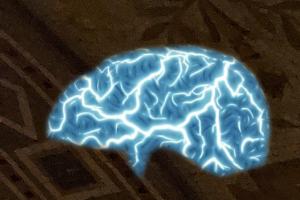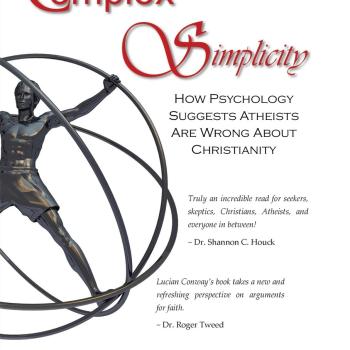
Since the challenging and changing of beliefs is integral to the study of conversion and deconversion, it seems relevant to examine the neurological research on this topic.
An Experiment Commences
The year was 2016, and one of the most contentious presidential elections in recent memory was underway. It was likely due to the political climate of the time that researchers at the University of Southern California decided to conduct a study on how the brain responds when challenged by views with which one disagrees.
Of course, having one’s deeply-held political convictions challenged may be generalized to the subject of challenges to one’s religious beliefs, but the study also included the brain’s response to changing one’s mind on the topic, which is especially relevant.
The Research Process
The researchers recruited college students (because those are the easiest participants to find when one is doing research on a college campus) in exchange for cash. The researchers targeted individuals specifically holding strong liberal beliefs, likely because this was Southern California and on a college campus, finding conservatives would have been a far more difficult prospect.
Once recruited, the participants were gathered and placed under a brain scanning device called a functional Magnetic Resonance Imaging machine (fMRI). As their brain activity was being monitored, the students read a handful of political statements with which they had expressed agreement during the screening process. These included the usual suspects, such as the legality of abortion or the taxation of the wealthy. The statements were presented on an MRI-compatible screen, and the students were asked to hit a button when they had finished reading. This allowed the researchers to see how long they lingered on the arguments.
After the agreeable statement had been presented, it was followed up by an argument against the statement. The arguments were selected for being provocative and compelling. Sometimes the arguments exaggerated the facts in order to more strongly relay the message. For instance, in response to the statement “The United States should reduce its military budget” the counterargument might assert that Russians had twice the nuclear capacity of the United States, which is not, in fact, the case.
The justification for the over-the-top counterarguments was to create as strong a response as possible. If the counterargument was the run-of-the-mill conservative talking point, the participant was likely to have heard it before, reducing the strength of the mental response.
Not-so-disagreeable Statements
It was very unlikely that these students would experience a change of mind for their deeply held political positions, so the researchers also included some ambivalent, non-political statements as well. Things like, “It is healthy to take daily vitamins” and “Thomas Edison invented the lightbulb.” These statements, while generally agreed with, have compelling arguments against them (daily vitamins may not be absorbed into the body, and end up being urinated away, and Edison probably took credit for an invention someone else had put most of the work into). As a result, many of the students did experience some change-of-mind on these less disagreeable statements.
The Findings
So what did the researchers find when people had to grapple with uncomfortable arguments? For one thing, students hit the button much more rapidly when viewing the non-political challenges than they did the political ones. Something about the challenge to their political views held the participants’ attention in a way the neutral arguments did not. But after the challenge was over, and the participants were asked to rate their belief in the political statements, they were far quicker in agreeing with their original views than they were in the non-political statements. If anything, they were more eager to affirm their original political views.
When it came to the political statements, the researchers found that the challenges activated what is called the “Default Mode Network,” which the researchers describe as “a set of interconnected structures associated with self-representation and disengagement from the external world.”
“Defending one’s beliefs against challenging evidence is a form of internally directed cognition, involving both disconnection from the externally presented evidence and a search through memory for relevant counterarguments”
If anything, the students retreated into their social identity as a form of cognitive protection against these assaults to their deeply held convictions.
Relationship to Religious Beliefs
The researchers in this study connected it to a similar study in 2009, which concluded that, “religious thinking is more associated with brain regions that govern emotion, self-representation, and cognitive conflict, while thinking about ordinary facts is more reliant upon memory retrieval networks.”
In other words, when one is considering a fact in which one is not personally invested – say, the invention of the light bulb – the brain really only focuses on fact retrieval. Facts are retrieved, compared with the new information, and adjusted as necessary.
But when one is confronted with challenges to deeply held convictions, whether they be political or religious, it is taken as an assault on personal identity, and the brain scrambles to distance itself from the challenge, re-affirm personal identity, and find facts to contradict the challenge.
Connections to Deconversion
So far we have discovered what the brain does to prevent a change of mind, so what can this tell us about when the mind actually does change in relationship to religious belief and identity?
In an earlier article, I made the distinction between disaffiliation (a casual drifting away from religious involvement) and deconversion (a radical change in identity). In that article I said that those who disaffiliate were never particularly invested in the first place. Their response to contradictions would be more similar to changing their mind about Edison and the light bulb. The brain retrieves the facts they know, compares it to the new facts, and they change their mind accordingly.
But in deconversion, one sees a much more dramatic change. Emotion, cognitive conflict, and self-representation are all very openly overturned.
A person who deconverts usually does so by way of one or the other of two approaches. One type tries to rescue their beliefs. They more heavily invest themselves in the reading of the Bible, prayer, and religious participation in a failing effort to retain some kind of belief. However, the others are more eager to dismantle their beliefs and escape the establishment. The first kind – the “rescuers” – are very evidently displaying the kinds of neural processes noted in this study. But perhaps a different study is required to examine the “dismantlers.” What goes on in their brains as they tear apart the identity they once embraced?
I will report on this when I stumble upon that evidence.


















